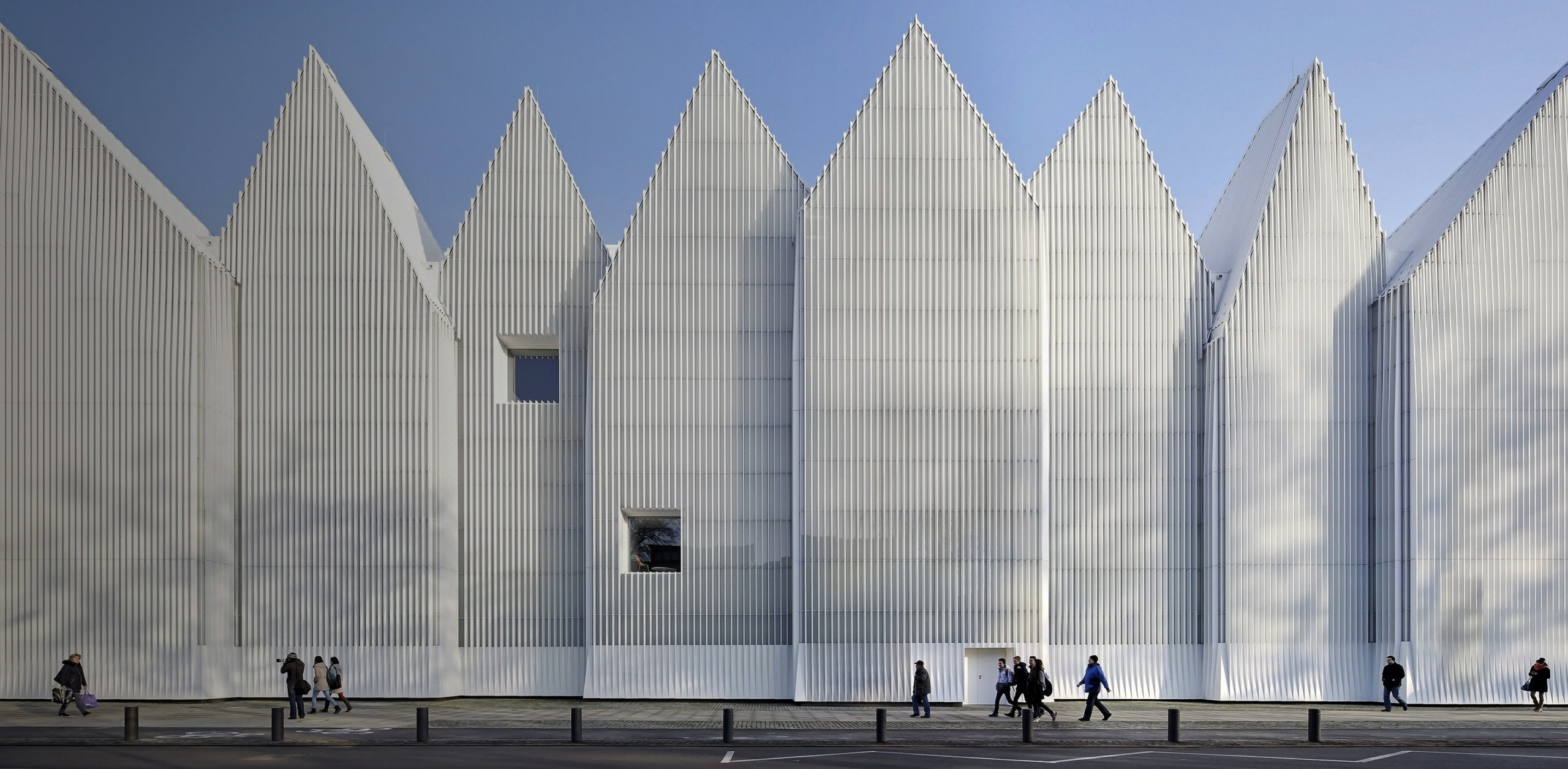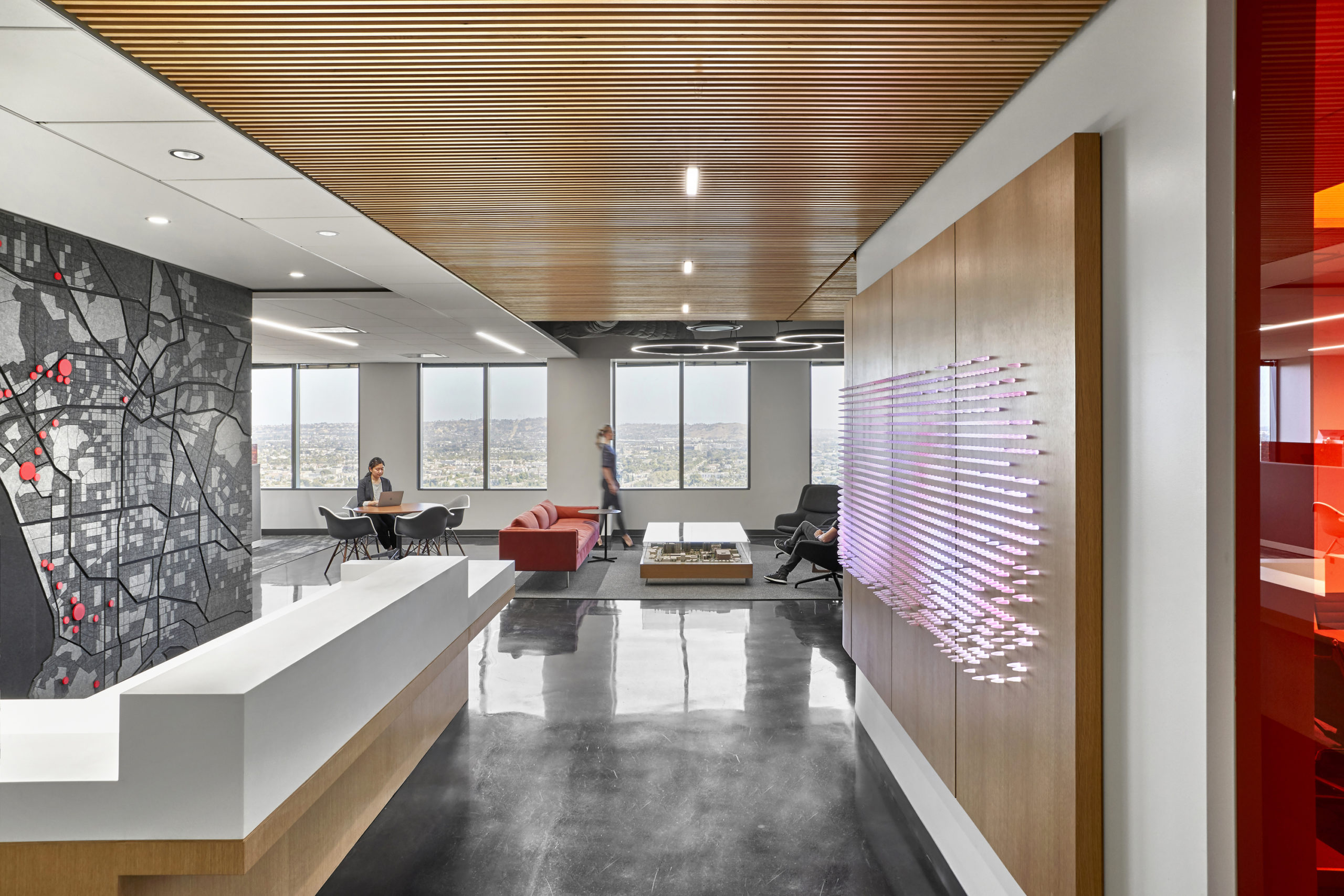CHYBIK + KRISTOF Architects & Urban Designers unveil the design for the Senezh Management Lab campus, conceived in response to the associated international invited competition. Located in Solnechnogorsk, a lakeside town on the outskirts of Moscow, the competition invited leading architecture and design studios worldwide, including Mecanoo and MADMA, to propose a site-specific and forward-thinking masterplan for the 82-hectare educational campus – revisiting existing notions of teaching and learning environments.

© monolot
Informed by the specifics of the site and developed alongside a landscape architect and educational specialist, CHYBIK + KRISTOF’s proposal brings together an applied reinterpretation of Constructivist educational
theory and an immersive anchoring in the surrounding natural environment.
Rooted in seminal 19th-century psychologist Lev Vygotsky’s “sociocultural theory,” the proposal sees the educational process – learning and teaching – as profoundly shaped by the social, cultural, and environmental conditions in which it is conducted.

© monolot
Vygotsky’s framework reexamined the prevailing Constructivist notions and education system of his time, supporting instead pedagogical and research methods that place context and culture at the center of inquiry and favor human diversity, interdisciplinary approaches and collaboration. Expanding on this premise, whose relevance resonates to this day, CHYBIK + KRISTOF envision an integrative, diverse site, combining multiple functions and demographies, grounded in sociocultural and educational interaction throughout the entirety of the site.

© monolot
Giving particular prominence to the impact of the environment, they propose a design deeply embedded in and informed by Senezh’s natural assets.The studio’s layout for the site reflects these principles. The core of learning is concentrated in the Lab. Bordering the forest and the lake, the singular polymorphous structure embraces the slope; the four-plan layering of floors allows for
permanent views onto the lake.

© monolot
The classrooms – set in clusters of three – are interconnected circular-shaped flexible enclosures within a vast winding lobby. Opening up onto the courtyard through movable wall partitions, they invest the volume as a continuous space, both interior and exterior, void of hierarchy and transitions between formal and informal learning, thereby encouraging interactions between students, professors and invited guests.

© monolot
The Lab’s Conference Hallfollows a similar configuration – based on a variable spatial organization that can be made into smaller lecture spaces. The adjoining buildings are punctuated throughout the extensive site and connected through a seamless network of alleys
encompassing the whole perimeter. Endorsing mobility – of individuals, and of ideas – the structures are both complementary and interdependent.

The library, an elevated multilayered open cylinder set along the shore, allows for individual retreat and collective research. The adjacent dormitories, wooden pavilions mirroring functional social housing applicable in other contexts, act as spaces for informal communal interaction and exchange. Culture represents a key
feature of the campus; the Art Cluster and adjacent Sculpture Park revisit a former maintenance building, while the Music Cluster, a converted former swimming center, brings together a Music Hall and spaces for music events.
Completing this tri-faceted set, the Research Cluster unfolds into a deeply creative environment nourished by the nearby infrastructure, where progressive ideas come into fruition within the adapted technical facilities.

A large set of pavilions,
versatile tree-like modules for studying, lectures, meetings, activities, populate the campus – shelters for encounters and community learning. Additionally, spaces for sport and relaxation – most of which are open to the public – are distributed across the site.
Understanding the natural surroundings as a fundamental agent of context, CHYBIK + KRISTOF lean on nature as a dual entity: a source of evolving knowledge and constant learning, and a space for awe, inspiration, contemplation and relaxation.

Students are invited to circulate seamlessly throughout the campus, where interior and exterior spaces, horizontality and verticality, are continually intertwined. The various atmospheres and types of ecosystems – from the lake, wetlands and urban landscaped sections to the open meadow, orchards and diverse forest – simulate all senses from
aroma to touch, sight to hearing, and are a fertile ground for the cultivation of curiosity and the movement of new ideas.
While the buildings of various scales echo the prolific vegetation, with the design blending into the existing, unaltered topography of the site, their function is also grounded in nature.

Eco-farms are punctuated throughout the site, whilst the open buildings and green roofs endorse a durable connection with the vegetal world. Anchored in sustainability, the campus functions through a wide array of composting, re- and up-cycling, and waste management infrastructure, while movement is assured through extensive walkways and bike and boat sharing.

A direct application of Vygotsky’s vision, the curriculum, echoing the natural setting, unfolds around the core notions of ecology, economy, and sociology. The entire site – its design and its function – nurtures innovative, onward-looking ideas in constant consideration of the environment as a key element of our future.
Architects and founders Michal Krištof and Ondřej Chybík reflect on the project, “This extensive project integrates the entire site as part of the education process.

It places the environment – both sociological and natural – at the root for all teachingand learning. The space itself, commonly seen as a formal structure disconnected from its function, acts here as a catalyst for knowledge sharing, critical evaluation, innovation and ultimately, progress.

Seamlessly integrated in the landscape, SenezhManagement Lab embodies the future of education – one deeply tied to environmental concerns, to a new knowledge economy, and to how our societies can better cohabit, and learn from, the natural world.” Upon review by a global panel of leading architects and educational experts, CHYBIK + KRISTOF’s progressive design was awarded 3rd prize for the competition.Client: Senezh Management LabYear: 2019Award: 3rd PrizeTeam: Michal Krištof, Ondřej Chybík, Jiří Richter, Tomáš Babka, Lukáš Habrovec, Larissa Vieira Matzak, GönülnurDemet, Francisco Javier Gomariz, Martin Holý, Ivo Stejskal, Luděk Šimoník, Ondřej Švancara, David Erik Bernátek,David Král, Dávid Medzihorský, Tomáš Wojtek, Jan Stolek, Michal Klimeš, Pavel Bánovský, Peter Chaban, MáriaBažíková, Michal Sluka, Šarka KubínováLandscape architects: Marko & placemakers, IGOR MARKOEducational specialist: Rndr.

Michal Černý, Masaryk UniversityLocal architect: Vyshegor Pavel LysikhinAnimation: Loom on the moonCGI: monolot.



 Senezh Management Lab Campus
Senezh Management Lab Campus 


